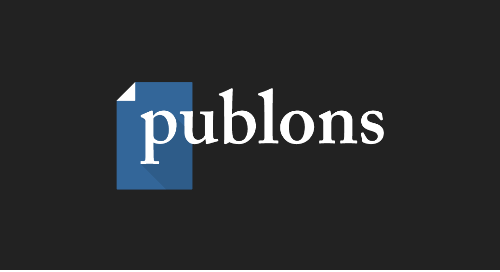wiley-transfer-desk-assistant-a-primer-for-editors
September 14, 2020
What is Transfer Desk Assistant?
Transfer Desk Assistant, or ‘TDA’, is a system introduced by Wiley to offer authors alternative journals for their paper, once it has been rejected from their initial choice. For the author, it has similar benefits to a referral actively offered by an editor, in that they do not have to go through the dull rigmarole of researching scopes, ploughing through author guidelines, and other time-consuming procedures – they receive an email with the suggestions, click a link and it’s all taken care of.
As with an editor-suggested referral, there is absolutely no obligation for the author. They are simply offered an option. Depending upon the scope of the paper, the author may be offered up to five journals which are also participating in the TDA system. If they choose not to take up the offer, that’s fine, and there’s no chasing. The author is clearly told that there’s no guarantee of acceptance at the suggested alternative journal, and that all editorial decisions are independent.
As with an editor-suggested referral, there is absolutely no obligation for the author. They are simply offered an option. Depending upon the scope of the paper, the author may be offered up to five journals which are also participating in the TDA system. If they choose not to take up the offer, that’s fine, and there’s no chasing. The author is clearly told that there’s no guarantee of acceptance at the suggested alternative journal, and that all editorial decisions are independent.
However, the key difference is that this all happens post-decision, so the next journal is suggested by an AI system, which maps the contents/scopes of other journals with the manuscript, rather than being suggested by an editor. What this essentially means is that it is less refined. We all know machine learning is rapidly becoming more sophisticated, but it is never going to replace the knowledge and experience of an editor embedded within the field. For that reason, TDA is more of a back-up to editor-suggested referrals; available to offer author choice if an editor doesn’t have the option of referring a paper or indeed chooses not to do so.
What is the benefit to my journal?
Well, it all adds value to the author experience. No-one likes having an article rejected, naturally, but if they can move on and get it published rapidly elsewhere, it softens the blow. The pressure to publish at speed is ever-increasing, especially at the early career stage, and TDA helps with that.
It can also help increase understanding of what authors want from a journal. For Feeder journals, your contact at Wiley will have access to the associated data, and they will be able to see if authors are consistently choosing an alternate journal in which to publish their work. It could even be a journal with a higher impact factor; everyone has different acceptance criteria, after all.
For Receiver journals, it increases submissions, and can signal that an editor-suggested referral option should be set up, which is always preferable. Moreover, even if the author chooses not to take up the transfer offer, it will raise awareness of the Receiver journal, which could make it the author’s first choice for their next paper.
For both Feeder and Receiver journals, TDA helps with refining scopes to reflect current research topics (e.g. are we rejecting papers that everyone else is publishing? Why is that?) If your journal is set up to use the editor-suggested pathway, TDA can be useful in (a) identifying new pathways and (b) assessing if previously used pathways aren’t functioning well. As an example, the broad-scope journal Ecology & Evolution has added several partner titles this way – authors were taking advantage of it to send their papers to the journal post-rejection from titles signed up to TDA, and this gave a good basis to open discussions with the editors of the original journals to make those pathways official.
How does it actually work?
The nuts and bolts are taken care of by the editorial offices. Both journals need to be using ScholarOne Manuscripts, but that’s it for the mechanics. Nothing at all needs to be done by the editor.
For journals receiving TDA papers, it’s similar to a ‘normal’ (editor-suggested) referral. If there are associated reviews, then they are transferred too and, according to your editorial office preferences, should be displayed for easy assessment. Other than that, it’s exactly the same as a normal submission. The author does have a chance to revise the manuscript first before resubmitting to the Receiver title, giving them the opportunity to improve their manuscript based upon comments they have received from the editor or reviewers, if applicable. It’s up to the author to decide if they do revise before submission.
For journals feeding papers to TDA, there’s no change. It all happens behind the scenes.
So why introduce it?
Simply put, there are potential benefits for the author, and no downsides. At worst, they are offered a referral that they don’t use, and no one is worse off. But the best-case scenario is that the author saves both time and effort in choosing a new journal and has a positive impression of the whole process. Authors come back to journals that make the publishing process easier, and that is what we believe TDA is doing.
For the editor, and the journal, the benefits are that more relevant submissions can be captured. If the TDA submission is not up to the Receiver journal’s expectations, a desk reject will take care of it, as with any other submission. There’s no expectation or obligation. A journal can always opt to just send rejected papers out via TDA, rather than receive as well.
At a glance
So, to summarise, there are two independent workflows for providing our rejected authors with alternative journal suggestions. These are complementary, and titles can participate in both. Referrals are editor-driven and are preferred by authors. The Transfer Desk Assistant (TDA) is driven by artificial intelligence behind the scenes, for authors that did not receive an editor-suggested referral when rejected. Therefore, rejected manuscripts will follow one of these pathways exclusively. As a reference guide, we’ve created the table below, which we hope will be useful to help differentiate between the two initiatives. Remember, editor-driven referrals provide a better author service and should always be the priority. Talk to your Wiley Journal Publishing Manager if you have questions or would like to see how your journal can offer authors transfer opportunities.
| Editor-driven referrals | TDA | |
| Pathway is determined when | EiC of Supporter Journal opts to reject and refer to a pre-configured Receiver Journal. | EiC of Feeder Journal opts to reject a manuscript without referral. This may also be the case whereby the Feeder Journal does not have an editor-driven referral cascade set up. |
| Editor involvement in transfer | Yes. Referrals and transfer offers are sent to authors by the editors of Supporter Journals (via EEO) – this is much more effective. | No. TDA automatically contacts authors who have received a hard reject. |
| Destination for rejected article | A selection of referral options may be configured following discussions between the Journal Publishing Manager and EiC. | Determined by content / scope mapping AI – this can be helpful where the manuscript was deemed out of scope for the Feeder Journal. |
| Authors choose where they transfer to | Yes. When the Supporter Journal refers to multiple journals, authors can choose where to transfer from the options when EEO configures the referral decision to “Author Choice”. | Yes, assuming that there is more than one scope-compatible title in TDA on offer. |
| Author has right of refusal | Always. Referrals can be ignored or rejected. | Always. Transfer offers can be ignored or rejected. |
| Editor involvement for journal which receives manuscript | Yes. Transfers are regarded as new submissions and are assessed for publication exactly as for direct submissions. Reviews [if they have them] from Supporter Journal are visible to editor of Receiver Journal. | Yes. Transfers are regarded as new submissions and are assessed for publication exactly as for direct submissions. Reviews [if they have them] from Feeder Journal are visible to editor of Receiver Journal. |









